Typical Dutch 03 – de kaasmarkt (cheese market)
Transcript of the video lesson (scroll for more text):
Hi there! Welcome to learndutch.org’s “Typical Dutch Vocabulary”. Each Saturday on our Facebook fanpage, we post about something typically Dutch (traditions, food, habits), and ask your opinion.
This is an extra video lesson to the post about de kaasmarkt (cheese market). Today, I am going to tell you not only about the market, but also about kaas, and other vocabulary related to cheese. After all, we are called “kaaskoppen”. Especially the Belgians like to use this nickname for the Dutch. But attention: the sound is not so positive. It’s not a swearword either. If you use it not to offend someone, then make clear it’s a joke.
Holland has a long history of making cheese, of almost three thousand years. We even had a revolution, not with a hammer and sickle; but with cheese and bread as the symbols!
Now, why is Holland famous for its cheese? The Dutch “polder” is quite wet. That makes it very suitable to have cows for milk production. And we all know, cheese is made from milk “kaas wordt van melk gemaakt”,. On the farm, making cheese, was usually the activity of the farmer’s wife (“de boerin”).
Nowadays the process of making cheese (in Dutch: “kaasbereiding”) is mostly an industrial process. The word for dairy industry in Dutch is “zuivel industrie”. We need the factories to meet an annual turnover of 660 million kilograms of cheese, of which 75% is exported.
But still, there are over 500 “kaasboerderijen”, farms where the cheese is made from the own cow’s milk.
At the moment there are 5 “kaasmarkten” left in the Netherlands. Four of them are touristic (Alkmaar, Edam, Hoorn and Gouda). Here you see how the cheese was traded traditionally. The cheese farmers (“kaasboeren”) used to bring their cheese to the town’s market square, carried on barrows. And you had to be strong to carry one: 160 kilograms carried by two people. By the cities of the cheese markets, you already recognise the two most famous cheese sorts of the Netherlands: Edam and Gouda.
Then there is a 5th cheese market in Woerden. This is a modern trading place for boerenkaas (farmer’s cheese). But once a year, in Woerden there also a traditional kaasmarkt on the town’s square.
Of course you can also buy cheese in the shops or on ordinary markets. But before you buy, you need to know a bit of vocabulary. There are different sorts. And the name is determined by the length of the period of ripening, in Dutch: “rijpen”.
Jonge kaas – 4 weeks (this is quite soft cheese– the longer it matures, the harder the cheese gets)
Jong belegen – 8-10 weeks
Belegen – 16-18 weeks
Extra belegen – 7-8 months
Oude kaas – 10-12 months
Overjarige kaas – > 12 months
During the ripening process, there appear holes “gaten” in the cheese. Such a cheese is called “gatenkaas”. Not to be confused with “geitenkaas” which is cheese from the goat’s milk.
Other vocabulary you need to know with “kaas”:
kaasschaaf – the tool to make slices of cheese to put on your bread
kaasschaafmethode – this is a cost reduction method, where you avoid significant reforms, but you just cut a bit on everything;
kaasbolletje – this is a small ball of cheese, usually 1-2 kilogram
kaasplank – this is a cheeseboard; it can refer to the wood, but also to what is on it; for example in pubs or restaurants as a snack you can order “een kaasplankje”
kaasstolp – this is the glass cover to store the cheese on room temperature
kaasrasp – is the grater to make
“geraspte kaas” – grated cheese
Some other words with cheese:
Pindakaas – peanut butter
Kaassouffle – it is a fried snack, just like the
Kaaskroket
Lokaas. Lokaas? That has nothing to do with cheese, because you should read it as “lok-aas”, “aas” is in english “bait” something to catch an animal, and the verb “lokken” is “to lure”. But, in the case of a mousetrap “lokaas” can be cheese.
So you know now a lot more about the Dutch cheese. And I got hungry by making this lesson. Ik ga naar de kaasmarkt, en daarna een lekker kaasplankje maken ! What about you? “Eet smakelijk”
For more videos to learn Dutch subscribe to our youtube channel.
See you there.
